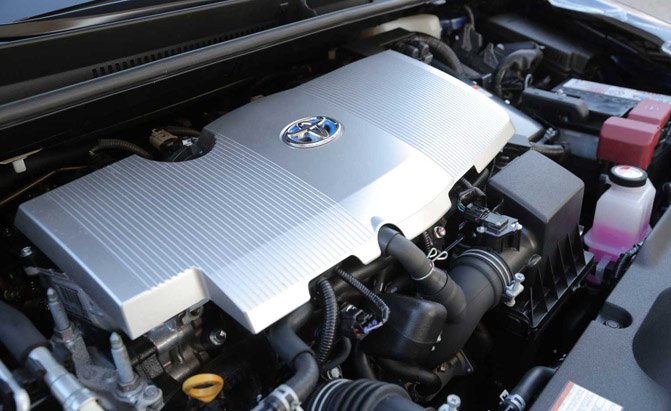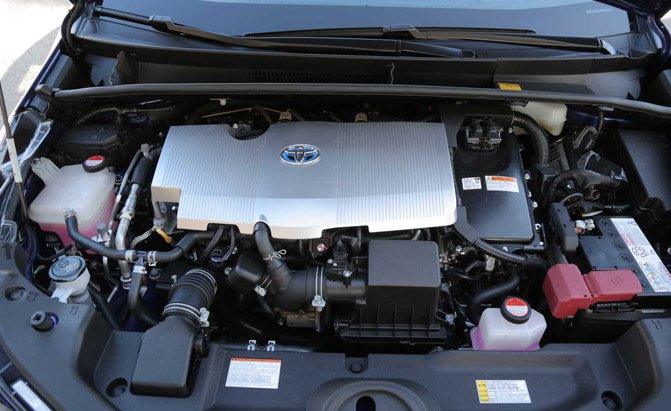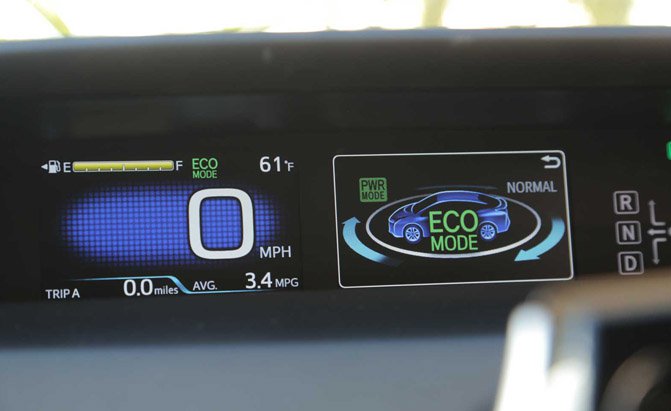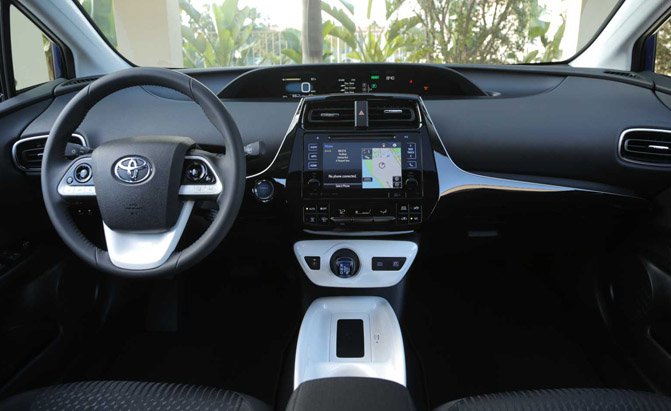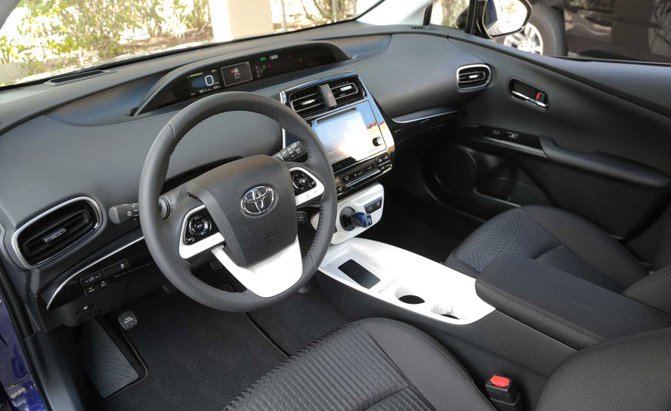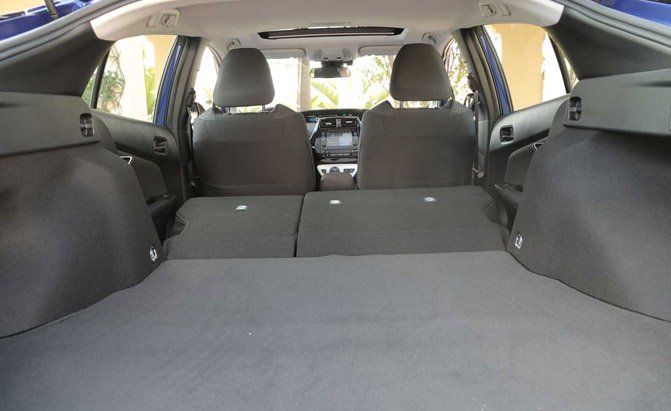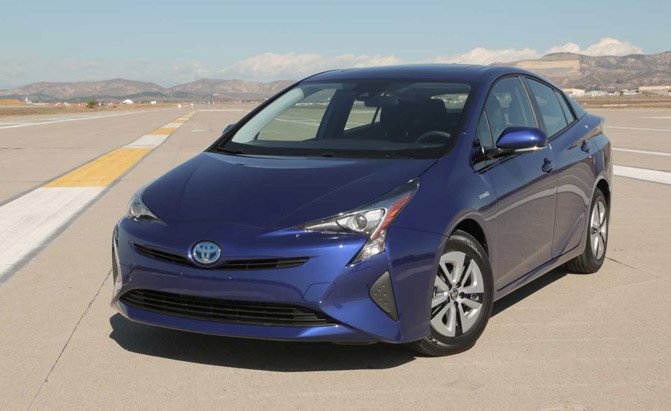Have you ever had a cronut? These crispy fried pastries meld the tender flakiness of a croissant with the deep fried decadence of a doughnut, creating a sweet treat that’s unlike anything else in your baker’s display case. Go ahead and try to find something similar. Even on a good day, that soggy, week-old baklava he’s been hawking is a poor substitute.
Twenty-odd years ago, Toyota began developing a cronut of its own, an automotive half breed that blends the attributes of a traditional gasoline-powered car with the those of an electric vehicle. By combining an internal-combustion engine with a high-capacity battery pack and an electric motor, they essentially invented the modern hybrid. Like a delicious half-breed pastry, the company’s Prius was born.
Get the Flash Player to see this player.
Little did they know at the time it would eventually became a global sensation. To date, more than 3.5 million of them have been delivered since it first went on sale in Japan nearly two decades ago.
Continuing to evolve the successful formula it laid down all those years ago, the company just released its all-new fourth-generation Prius, which is taking a bow for the 2016 model year.
Foundational Changes
This car has been completely overhauled from stem to stern, keel to crow’s nest. About the only thing that’s gone unchanged is the name and wheelbase, which curiously measures an identical 106.3 inches. This is unusual, since the 2016 Prius is built on a never-before seen platform.
It’s the first vehicle to ride atop Toyota’s New Global Architecture, TNGA in corporate shorthand. This platform graces the car with 60 percent greater torsional stiffness than its predecessor along with myriad other benefits this engenders, from enhanced ride and handling attributes to greater safety.
Helping deliver this foundation-rivaling sturdiness, the Prius’ structure is comprised of 19 percent high-strength steel, up from just 3 percent in the outgoing model.
Dimensionally this car has grown in every direction save height, where’s its actually shrunk by about one inch. Overall the car is about 2.5 inches longer and more than half an inch broader.
These changes increase space for both occupants and cargo; people and parcels should both be happier in the 2016 Prius. Models not equipped with a spare tire have more than 27 cubic feet of storage in the aft hold when the rear seats are folded flat.
Technical Tour de Force
The outgoing model is motivated by a hybrid drivetrain that’s centered around a 1.8-liter gasoline four-cylinder engine. And that’s precisely what’s found under the hood of the all-new 2016 Prius, except not exactly.
The car still features a 1.8-liter internal-combustion powerplant but it’s been totally overhauled. The intake ports and coolant passages have been redesigned, internal friction has been slashed, it runs a lower viscosity oil to further cut parasitic losses and it even benefits from something called large-volume exhaust-gas recirculation.
These extensive changes boost thermal efficiency to 40 percent, which helps improves fuel economy. According to experts at Toyota, is the best of any mass-produced engine in the world. All told it cranks out 95 horsepower on its own, but internal combustion is only a part of the Prius’ powertrain.
The car’s electric motor and continuously variable transaxle have been ruthlessly optimized as well, shedding weight and losing parasitic losses.
Juicing these components is one of two different batteries. The most basic model soldiers on with a nickel-metal hydride pack, which keeps cost down, but all other models feature lithium-ion cell chemistry, which is even more energy dense. Fortunately, they’ve both been reduced in size and weight, which has allowed them to be mounted underneath the rear seat, something that helps increase cargo-carrying capacity.
With its electric motor and battery pack multiplying the fury of its gasoline engine, the new Prius’ drivetrain puts out a claimed 121 ponies, which sounds pathetic in today’s world where 400 horses are the norm, but it’s not as flaccid as you might think.
Maximizing Miserly Motoring
And one major benefit of having less power than, say, a Ford Mustang GT is enhanced efficiency. And as in with previous generations, this latest Prius is stunningly economical in all driving situations.
The car is projected to sticker at 54 miles per gallon in urban driving conditions and 50 on the highway. Combined, it’s expected to average a breathtaking 52 mpg.
Not content with these figures, Toyota has also developed an Eco variant of the new Prius that’s even more misery than mainline models. These cars have been strategically lightened in numerous ways. They lack a lot of the advanced technology offered in other versions, do not have a spare tire and ride on 15-inch wheels instead of 17s.
That may sound like a lot to sacrifice but the numbers on the window sticker should go a long way to offsetting these losses. Prius Eco models should sticker at 58 mpg city, 53 highway and 56 combined. Toyota claims this makes the Prius the most efficient non plug-in-capable car available.
Spaceship Interior
Sliding behind the 2016 Prius’ steering wheel, you’re sure to notice this car’s familiar interior design. The dashboard features a two-tier layout that’s both futuristic and strange looking at the same time. It’s kind of like the cockpit of an alien spacecraft.
This flying saucer’s cabin is constructed of pretty high-quality stuff and the build quality is stellar. The dashboard is comprised of nicely grained soft plastic that spills across the door paneling. Hard polymers are pretty premium as well. Nothing in the Prius feel cheap or otherwise ill conceived, except one part.
The visors are far too short to adequately serve taller drivers, who are sure to suffer blindness while driving in bright sunshine. Making things worse, they don’t slide or extend in any way, which means they block only a little more than half of the front door glass. This is hugely irritating at best, incredibly dangerous at worst.
As with its predecessor, the new Prius’ gauges are mounted in an oblong cluster located near the base of the windshield. This year the instruments are comprised of two 4.2-inch color display screens, which are bright, sharp and highly legible.
Sun visors notwithstanding, the capital T has also upped this car’s available security features. Chief among these enhancements is Toyota Safety Sense, a suite of advanced driver-assistance technology. It includes things like Dynamic Radar Cruise Control, automatic high beams, lane-departure alert and more. This technology is optional on several Prius models and standard on Touring-trim cars.
The Drive
Stabbing the power button, sliding its stubby shifter into drive and hitting the road, you’ll realize in about two city blocks that the all-new Prius is no sports car … obviously; you already knew that. Still, engineers worked to improve the way this vehicle handles and feels while in motion.
For starters, they pushed to quell unwanted noise, vibration and harshness. There’s more sound deadening material on the floor, behind the dashboard and even under the hood to minimize the intrusion of unwanted racket.
Along with its stiff new structure, the 2016 Prius also features a double-wishbone rear suspension instead of an old-school torsion beam. This helps the rear feel more planted and reduces road shock, though most drivers will n
ever notice a difference.
Steering is pleasantly precise, with essentially no deadness or slop on center, but the overall weighting is just a tad too light. Some extra heft would be appreciated and go a long way to making this hybrid feel sportier.
As for powertrain performance, the new Prius has been tuned for greater low-speed responsiveness than before. The reworked electric motor helps it really scoot at around-town velocities. Acceleration to roughly 30 or 35 miles an hour is surprisingly brisk, though its enthusiasm tapers off continually the faster you’re going.
The Verdict: 2016 Toyota Prius Review
If you’re into saving the planet or just a little money at the pump, Toyota’s all-new Prius is sweeter than baker’s dozen of your favorite sweets. Of course if canyon-carving, tire-toasting performance is your thing then you need to shop elsewhere.
This industry-leading hybrid offers more refinement, technology and interior space than ever before, oh, and perhaps most importantly, a lot more miles per gallon. And best of all it delivers all of this wholesome goodness at a price that won’t send you into bankruptcy. The Prius Two starts at an affordable $25,035 including $835 in delivery charges.
Discuss this story on our Toyota Prius Forum







